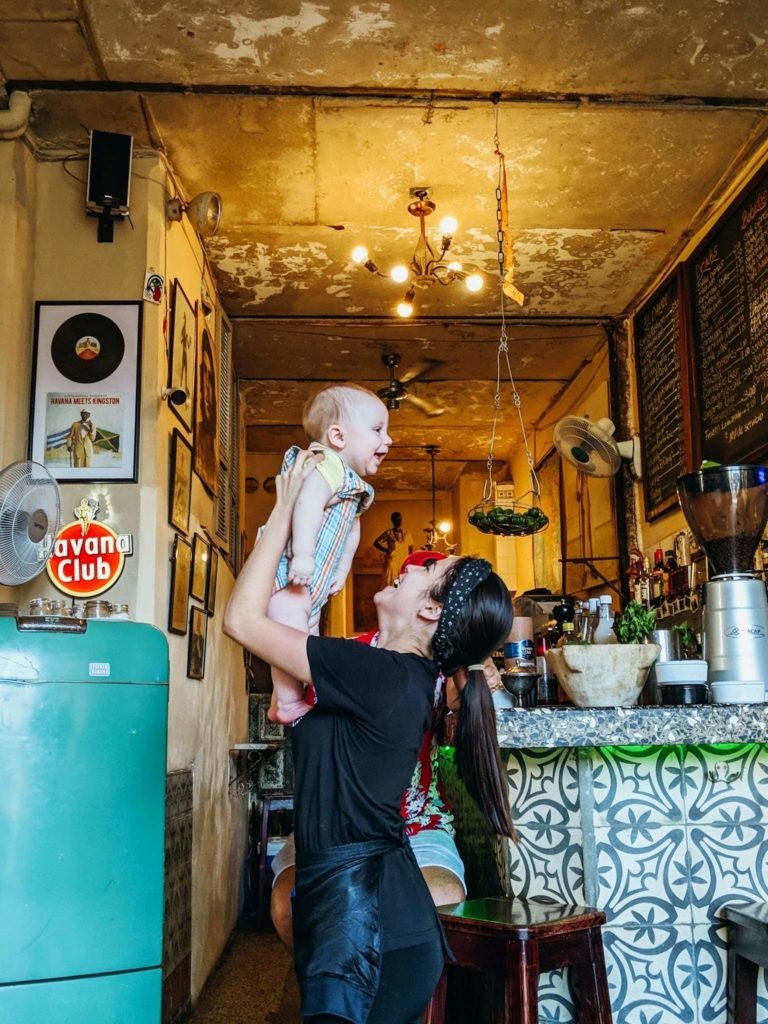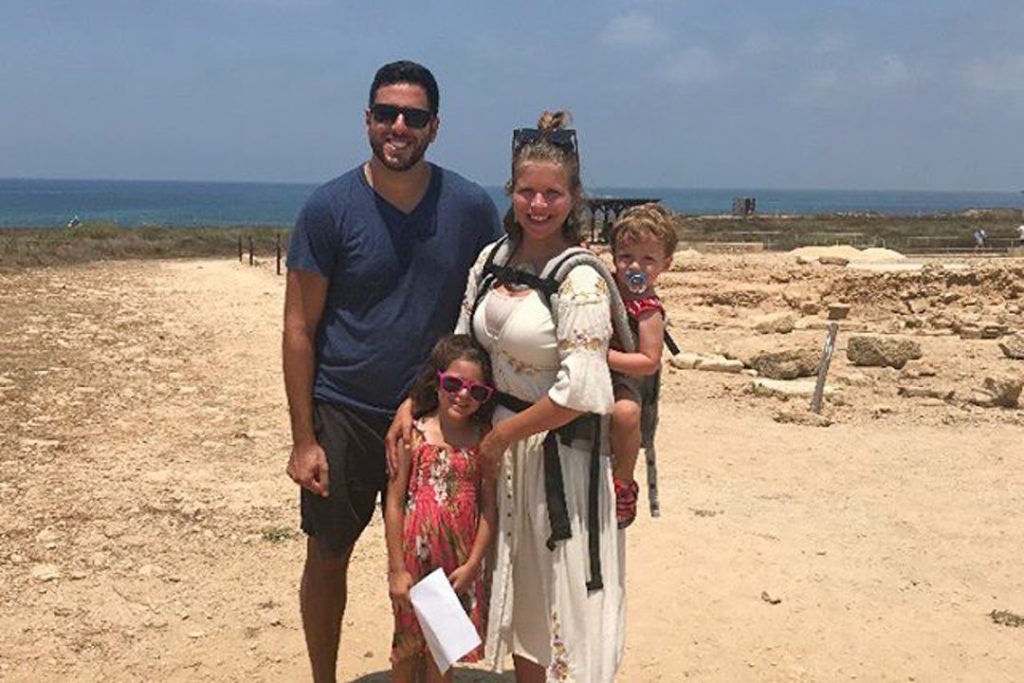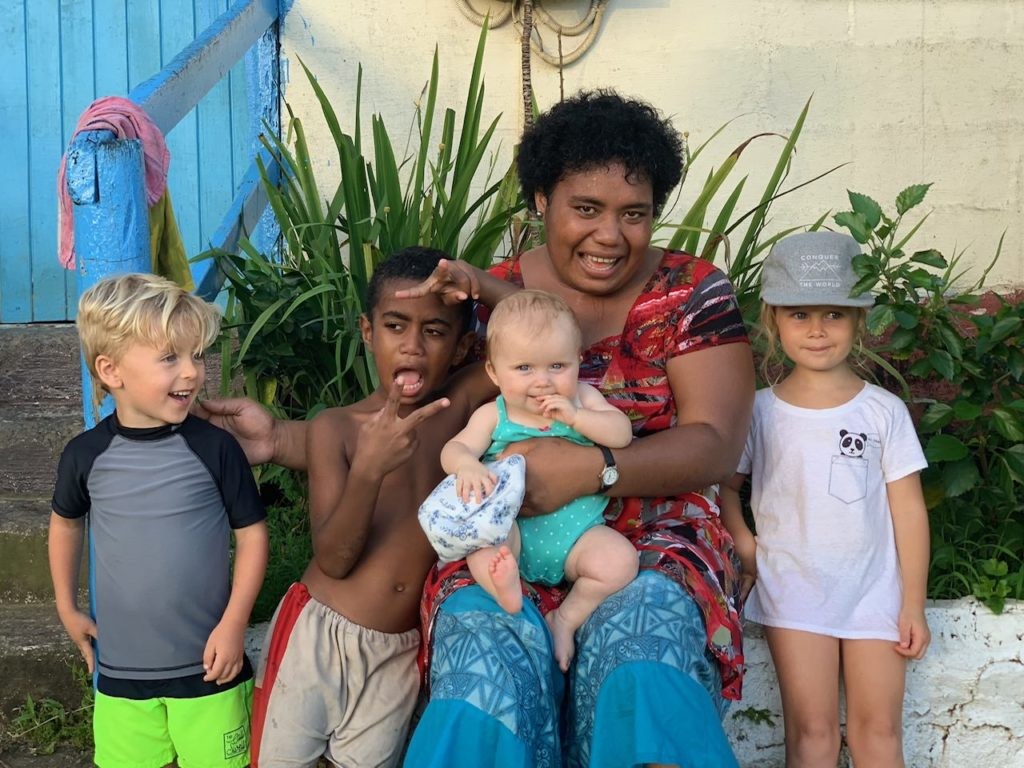Traveling with an infant can seem daunting, but it’s absolutely possible to have a memorable and enjoyable vacation. At TRAVELS.EDU.VN, we help families discover fantastic, unexpected destinations perfect for babies. We provide meticulously planned tours, detailed destination information, and responsive support, ensuring you can relax and savor every moment. Start your adventure by exploring destinations where infant travel is not only manageable but truly rewarding, offering both comfort and excitement for the whole family.
1. What Makes a Travel Destination Baby-Friendly?
A baby-friendly destination offers a combination of factors that cater to the needs of infants and their parents. These include accessible healthcare, safe accommodations, convenient transportation, and activities suitable for young children. Destinations with good hygiene standards, readily available baby supplies, and a welcoming attitude towards families are also highly desirable.
- Healthcare Access: Access to pediatricians and emergency medical services is crucial for peace of mind.
- Safe Accommodations: Hotels or rentals offering cribs, high chairs, and baby-proofing services can significantly ease your stay.
- Convenient Transportation: Destinations with stroller-friendly sidewalks, reliable public transport, or readily available car rentals simplify getting around.
- Family-Friendly Activities: Parks, beaches, and child-friendly museums or attractions provide entertainment for the whole family.
- Essential Amenities: Easy access to diapers, formula, and other baby essentials is a must.
- Welcoming Culture: A culture that embraces families with young children can make your experience much more enjoyable.
2. What are Some Unexpectedly Baby-Friendly Destinations?
While some destinations are obvious choices for families with infants, many less-considered locations can be surprisingly accommodating. These places often offer unique cultural experiences, beautiful scenery, and a slower pace of life that can be ideal for traveling with a baby.
- Portugal: Known for its family-friendly atmosphere, Portugal offers beautiful beaches, historic cities, and delicious cuisine.
- Costa Rica: This Central American nation is perfect for nature-loving families, with its abundant wildlife, lush rainforests, and gentle beaches.
- Iceland: With its clean air, geothermal pools, and stunning landscapes, Iceland is a unique and surprisingly baby-friendly destination.
- Slovenia: This hidden gem in Europe boasts picturesque lakes, charming towns, and a relaxed atmosphere perfect for families.
- Canada: With vast national parks, friendly cities, and numerous family-oriented attractions, Canada offers something for everyone.
3. How Can I Prepare for Air Travel with an Infant?
Air travel with an infant requires careful planning to ensure a smooth and comfortable journey. From booking the right seats to packing essential supplies, preparation is key to minimizing stress and maximizing enjoyment.
-
Booking Flights:
- Seat Selection: Opt for bulkhead seats, which offer extra legroom and space for a bassinet.
- Flight Timing: Choose flights that coincide with your baby’s nap times to minimize fussiness.
- Direct Flights: Whenever possible, book direct flights to reduce the stress of layovers and connecting flights.
-
Packing Essentials:
- Diaper Bag: Pack an adequately stocked diaper bag with diapers, wipes, changing pads, and rash cream.
- Feeding Supplies: Bring formula, bottles, snacks, and baby food pouches in travel-friendly containers.
- Comfort Items: Include familiar toys, blankets, or pacifiers to soothe your baby during the flight.
- Extra Clothing: Pack several changes of clothes for both you and your baby in case of spills or accidents.
-
During the Flight:
- Ear Pressure: Offer a bottle, pacifier, or breastfeed during takeoff and landing to help alleviate ear pressure.
- Movement Breaks: Take short walks up and down the aisle to keep your baby content and prevent restlessness.
- Entertainment: Bring age-appropriate books, toys, or electronic devices to entertain your baby during the flight.
-
Navigating Airports:
- Strollers and Carriers: Use a stroller or baby carrier to navigate the airport easily. Check with the airline about their policies for gate-checking strollers.
- Security Checkpoints: Be prepared to remove your baby from the stroller or carrier during security screening.
- Nursing Rooms: Utilize nursing rooms or family restrooms for diaper changes and feeding.
 Infant sleeping peacefully in a bassinet on a long-haul flight, highlighting comfort and convenience for parents.
Infant sleeping peacefully in a bassinet on a long-haul flight, highlighting comfort and convenience for parents.
4. What are the Best Types of Accommodation for Families with Infants?
Selecting the right accommodation is crucial for a comfortable and convenient stay when traveling with an infant. Certain types of lodging offer amenities and services that cater specifically to the needs of families with young children.
- Hotels:
- Family Suites: Look for hotels with spacious family suites that include separate sleeping areas, kitchenettes, and living spaces.
- Cribs and High Chairs: Confirm that the hotel provides cribs and high chairs for your baby’s comfort and safety.
- Babysitting Services: Check if the hotel offers babysitting services for parents who want some time to themselves.
- On-Site Amenities: Hotels with pools, play areas, or kid-friendly restaurants can add extra convenience.
- Vacation Rentals:
- Home-Like Comforts: Vacation rentals like apartments or houses offer more space and privacy compared to traditional hotel rooms.
- Fully Equipped Kitchens: Having a fully equipped kitchen allows you to prepare meals and snacks for your baby easily.
- Laundry Facilities: Access to laundry facilities is a huge plus for washing baby clothes and minimizing packing.
- Outdoor Space: Look for rentals with gardens, patios, or balconies where your baby can play and explore safely.
- Resorts:
- All-Inclusive Packages: All-inclusive resorts can simplify budgeting and planning, as meals, drinks, and activities are often included.
- Kids’ Clubs: Resorts with kids’ clubs offer supervised activities and entertainment for older children, giving parents some downtime.
- Baby-Friendly Amenities: Some resorts provide baby gear like strollers, carriers, and bottle sterilizers.
- Dedicated Pools: Look for resorts with shallow pools or splash pads designed specifically for babies and toddlers.
5. What Essential Baby Gear Should I Pack for a Trip?
Packing the right baby gear is essential for ensuring your infant’s comfort, safety, and well-being while traveling. Prioritize items that are versatile, lightweight, and easy to transport.
- Stroller or Baby Carrier: Choose a lightweight, foldable stroller or a comfortable baby carrier for navigating airports, cities, and attractions.
- Travel Crib: A portable travel crib provides a safe and familiar sleeping environment for your baby, especially if accommodations do not offer suitable cribs.
- Diaper Bag: A well-stocked diaper bag should include diapers, wipes, changing pads, rash cream, hand sanitizer, and disposable bags.
- Feeding Supplies: Pack bottles, formula, snacks, baby food pouches, bibs, and utensils in travel-friendly containers.
- Clothing: Bring an adequate supply of clothing, including onesies, pants, socks, hats, and outerwear appropriate for the destination’s climate.
- Medications and First-Aid Kit: Include essential medications, such as pain relievers, fever reducers, and any prescription medications your baby requires. Also, pack a basic first-aid kit with bandages, antiseptic wipes, and insect repellent.
- Comfort Items: Bring familiar toys, blankets, or pacifiers to soothe your baby during the flight or in unfamiliar surroundings.
6. How Can I Adjust My Baby’s Sleep Schedule While Traveling?
Adjusting your baby’s sleep schedule during travel can be challenging, but with careful planning and flexibility, you can minimize disruptions and promote restful sleep.
-
Pre-Trip Preparation:
- Gradual Adjustment: Start adjusting your baby’s sleep schedule a few days before your trip by gradually shifting bedtime and wake-up times.
- Familiar Environment: Create a familiar sleep environment by bringing your baby’s favorite blanket, stuffed animal, or bedtime books.
-
During Travel:
- Maintain Routine: Try to maintain your baby’s regular bedtime routine as much as possible, including bath time, story time, and lullabies.
- Time Zone Adjustment: Gradually adjust your baby’s sleep schedule to the new time zone by shifting bedtime and wake-up times by an hour or two each day.
- Darkness and Noise Control: Use blackout curtains or portable shades to create a dark sleep environment and white noise machines to mask unfamiliar sounds.
-
On Arrival:
- Sunlight Exposure: Expose your baby to natural sunlight during the day to help regulate their circadian rhythm.
- Consistent Schedule: Stick to a consistent sleep schedule as much as possible to help your baby adjust to the new time zone.
- Patience and Flexibility: Be patient and flexible, as it may take a few days for your baby to fully adjust to the new sleep schedule.
 A serene image of a baby sleeping in a travel crib, emphasizing the importance of a safe and familiar sleep environment.
A serene image of a baby sleeping in a travel crib, emphasizing the importance of a safe and familiar sleep environment.
7. How Do I Handle Feeding My Infant While Traveling?
Managing your infant’s feeding needs while traveling requires careful planning and preparation. Whether you are breastfeeding, formula-feeding, or introducing solids, there are several strategies to ensure your baby receives adequate nutrition on the go.
-
Breastfeeding:
- Comfortable Clothing: Wear comfortable and discreet nursing clothes that allow easy access for breastfeeding.
- Nursing Covers: Use a nursing cover or scarf for privacy when breastfeeding in public places.
- Hydration and Nutrition: Stay hydrated and maintain a healthy diet to support milk production and energy levels.
-
Formula Feeding:
- Pre-Measured Formula: Pack pre-measured formula containers or single-serve packets for easy and convenient feeding on the go.
- Sterilized Bottles: Bring sterilized bottles and nipples or disposable bottle liners to minimize the risk of contamination.
- Water Source: Ensure access to safe and clean water for mixing formula. Bottled water or boiled water are reliable options.
-
Introducing Solids:
- Baby Food Pouches: Pack baby food pouches with pureed fruits, vegetables, and meats for convenient and mess-free feeding.
- Snack Containers: Bring small, portable snack containers with healthy options like crackers, rice cakes, or soft fruits.
- Utensils and Bibs: Pack utensils, bibs, and wipes for easy cleanup after meals.
-
General Tips:
- Frequent Feedings: Offer frequent feedings to keep your baby hydrated and prevent hunger-related fussiness.
- Proper Storage: Store breast milk, formula, and baby food properly to prevent spoilage and contamination.
- Allergy Awareness: Be mindful of potential allergens and dietary restrictions when selecting food options.
8. What Safety Precautions Should I Take When Traveling with an Infant?
Ensuring your infant’s safety should be a top priority when traveling. This includes taking precautions related to transportation, accommodation, and general health.
-
Transportation Safety:
- Car Seats: Use an FAA-approved car seat or restraint system during air travel and in rental cars.
- Proper Installation: Ensure the car seat is properly installed and secured according to the manufacturer’s instructions.
- Safe Walking: When walking, use a stroller with a secure harness or a baby carrier to keep your baby safe and close by.
-
Accommodation Safety:
- Baby-Proofing: Baby-proof your accommodation by covering electrical outlets, securing furniture, and removing potential hazards.
- Crib Safety: Ensure the crib is sturdy, has a firm mattress, and meets safety standards.
- Smoke Detectors: Check that smoke detectors are present and functioning properly.
-
Health and Hygiene:
- Vaccinations: Consult your pediatrician about necessary vaccinations and health precautions for your destination.
- Hand Hygiene: Practice frequent hand washing with soap and water or use hand sanitizer, especially before feeding or handling your baby.
- Water Safety: Use bottled water or boiled water for drinking, mixing formula, and brushing teeth.
- Sun Protection: Protect your baby from the sun with hats, sunglasses, and sunscreen.
-
General Safety:
- Supervision: Never leave your baby unattended, especially near water or in unfamiliar environments.
- Emergency Contacts: Keep a list of emergency contacts, including local medical facilities, your pediatrician, and your embassy or consulate.
- Travel Insurance: Purchase travel insurance that covers medical expenses, trip cancellations, and other unforeseen events.
9. How Can I Find Baby-Friendly Activities at My Destination?
Finding activities that cater to infants and young children can enhance your travel experience and create lasting memories.
-
Research in Advance:
- Online Resources: Use travel websites, blogs, and forums to research baby-friendly attractions and activities at your destination.
- Parent Communities: Join online parent communities or social media groups to get recommendations and tips from other families who have traveled to the same area.
-
Local Resources:
- Tourist Information Centers: Visit local tourist information centers for maps, brochures, and recommendations for family-friendly activities.
- Hotel Concierge: Ask the hotel concierge for suggestions on nearby parks, playgrounds, museums, and other attractions suitable for infants.
-
Types of Activities:
- Parks and Playgrounds: Look for parks and playgrounds with soft surfaces, shaded areas, and age-appropriate play equipment.
- Beaches: Choose beaches with calm waters, soft sand, and shaded areas for a relaxing day by the sea.
- Museums: Visit children’s museums or museums with interactive exhibits that cater to young children.
- Zoos and Aquariums: Explore zoos and aquariums to see animals and marine life up close.
- Outdoor Activities: Consider gentle hiking trails, boat tours, or scenic drives that are suitable for infants.
 A happy baby enjoying a stroller ride in a park, illustrating the joy of exploring baby-friendly outdoor activities.
A happy baby enjoying a stroller ride in a park, illustrating the joy of exploring baby-friendly outdoor activities.
10. How Can I Manage Travel Stress When Traveling with an Infant?
Traveling with an infant can be stressful, but there are several strategies to manage stress and maintain a positive attitude.
-
Planning and Preparation:
- Detailed Itinerary: Create a detailed itinerary with realistic expectations and built-in flexibility.
- Packing List: Prepare a comprehensive packing list to ensure you have all the necessary items for your baby’s comfort and care.
- Book in Advance: Book flights, accommodations, and activities in advance to avoid last-minute stress and ensure availability.
-
During Travel:
- Stay Organized: Keep all travel documents, tickets, and confirmations easily accessible.
- Prioritize Rest: Get adequate rest and prioritize self-care to maintain your energy levels and emotional well-being.
- Stay Hydrated: Drink plenty of water to stay hydrated and prevent fatigue.
-
Mindset and Attitude:
- Positive Thinking: Maintain a positive attitude and focus on the joys of traveling with your baby.
- Flexibility: Be flexible and adapt to unexpected changes or delays.
- Accept Help: Accept help from family members, friends, or travel companions.
- Take Breaks: Take breaks when needed to relax, recharge, and reconnect with your baby.
-
Communication:
- Clear Communication: Communicate clearly with your partner, family members, or travel companions about your needs and expectations.
- Express Feelings: Express your feelings and concerns openly and honestly to prevent misunderstandings and build support.
By following these strategies, you can minimize stress, enhance your travel experience, and create unforgettable memories with your infant.
TRAVELS.EDU.VN offers specialized services to make traveling with an infant seamless and enjoyable. From meticulously planned tours to personalized support, we are here to help you create unforgettable memories with your little one.
Ready to plan your baby-friendly getaway? Contact TRAVELS.EDU.VN today for expert advice and customized travel packages.
Address: 123 Main St, Napa, CA 94559, United States
WhatsApp: +1 (707) 257-5400
Website: TRAVELS.EDU.VN
FAQ: Frequently Asked Questions About Traveling With An Infant
1. What is the best age to travel with an infant?
There’s no single “best” age, but many parents find that infants between 3 and 9 months old are relatively easy to travel with. They may be more adaptable than older babies and less mobile, making it easier to manage them on flights and in new environments.
2. Can I bring breast milk or formula on a plane?
Yes, you can bring breast milk, formula, and baby food in reasonable quantities through airport security. Inform the TSA officer at the checkpoint for inspection.
3. How can I keep my baby entertained on a long flight?
Pack a variety of age-appropriate toys, books, and electronic devices to keep your baby engaged. Frequent walks up and down the aisle can also help.
4. What are the airline regulations for infants?
Most airlines allow infants under two years old to fly on a parent’s lap for a reduced fare or free of charge on domestic flights. Check with your airline for specific policies and fees.
5. How can I protect my baby from germs while traveling?
Practice frequent hand washing with soap and water or use hand sanitizer. Avoid touching your face, and wipe down surfaces with disinfectant wipes.
6. What should I do if my baby gets sick while traveling?
Consult a local doctor or seek medical attention if your baby develops symptoms of illness. Travel insurance can help cover medical expenses.
7. How do I choose a car seat for travel?
Choose an FAA-approved car seat that is appropriate for your baby’s age and weight. Ensure it is properly installed and secured in the car.
8. What are some tips for dealing with jet lag in infants?
Expose your baby to natural sunlight during the day and adjust their sleep schedule gradually to the new time zone.
9. How can I find baby-friendly restaurants at my destination?
Search online for restaurants with high chairs, kid-friendly menus, and a welcoming attitude towards families.
10. What should I do if my baby cries during a flight?
Try to soothe your baby by offering a bottle, pacifier, or toy. Walk around the aisle or use gentle rocking motions to calm them.
By planning ahead and considering these factors, you can confidently choose the best destinations for traveling with your infant, ensuring a memorable and stress-free experience for the entire family. Remember, travels.edu.vn is here to assist with every step, offering tailored solutions for your unique travel needs.
